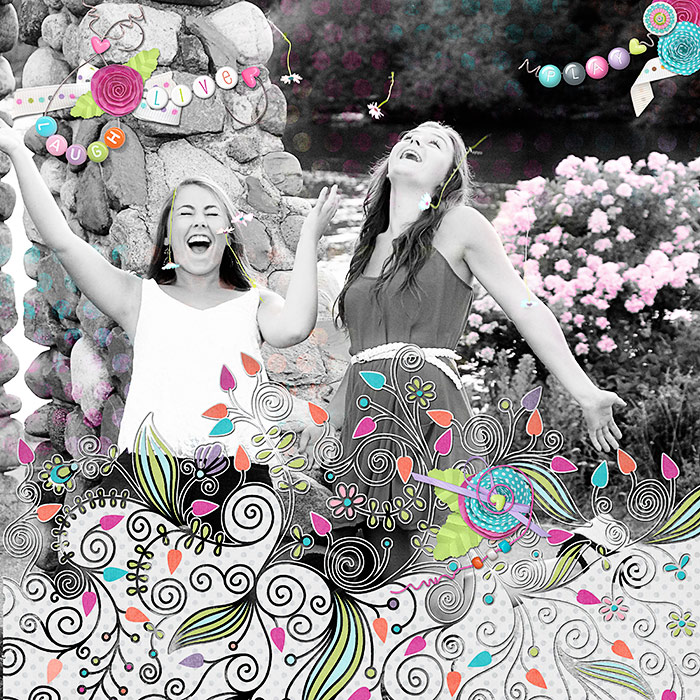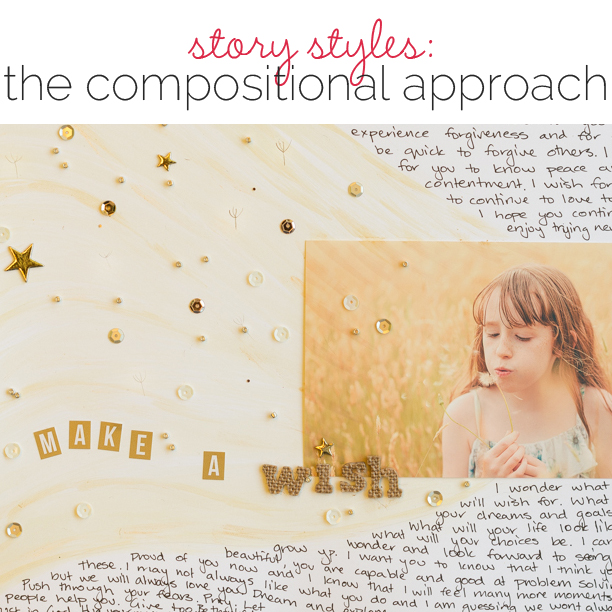 Your best scrapbook pages reflect a visual storytelling style–your preference for certain kinds of stories and your way of telling them both visually and with words. We defined and illustrated 10 different story styles in the Story Styles LookBook that’s a part of the Get It Scrapped membership.
Your best scrapbook pages reflect a visual storytelling style–your preference for certain kinds of stories and your way of telling them both visually and with words. We defined and illustrated 10 different story styles in the Story Styles LookBook that’s a part of the Get It Scrapped membership.
One of those styles is the Compositional Story Style. A compositional storytelling style considers the characters, setting, and actions you’re recordings and uses design to recreate one or more aspects of this story world on the page.
See our examples of this style, and give it a try yourself.
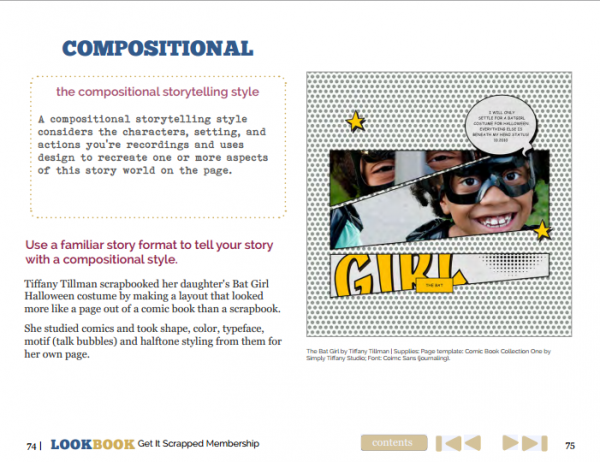
Here’s a look at the first page of the chapter on Compositional Story Style in the Look Book on this topic. This is just one of the 10 chapters/story styles. See the whole LookBook in eBook and interactive formats when you’re a member at Get It Scrapped.
[hr]
Kristy T says, “There is a saying that when you blow the seeds from the flower you can make a wish. This page documents my hopes for my daughter’s future and my wondering about what her dreams will be.”
“I created a background that gives the appearance of the wind and drew in extra seeds blowing away. Warm colors from the photograph, the flowing shape, and the scattered elements all add to the feeling that the photograph almost extends across the whole page and that the seeds are floating off in the wind. The journalling frames the other elements and leaves lots of space for the embellishments to create movement across the page.”
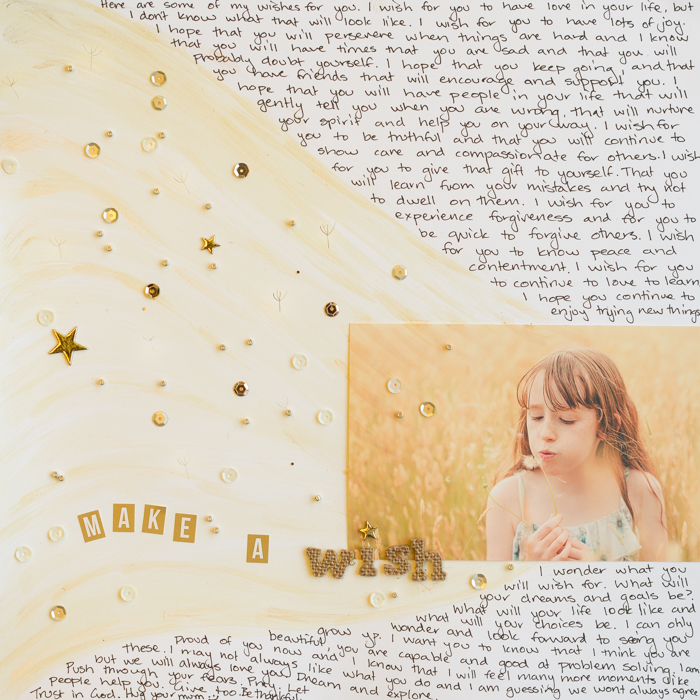
Make A Wish by Kristy T| Supplies: Cardstock: Artee; Pen: Artline; Paint: Distress Paint; Glimmer sprays/mists: Prima, Bo Bunny; Chipboard Stars: Studio Calico; Sequins: Hazel and Ruby, Beads: Unknown; Alphas: Teresa Collins, American Crafts; Gold Pencil: Prismacolour.
[hr]
Sue Althouse says, “This page is about our 640 mile drive to the beach and the familiar landmarks on the trip that mark our progress. I cut a map design using my Silhouette and used floss and enamel dots to connect points on the map with the appropriate photos.”
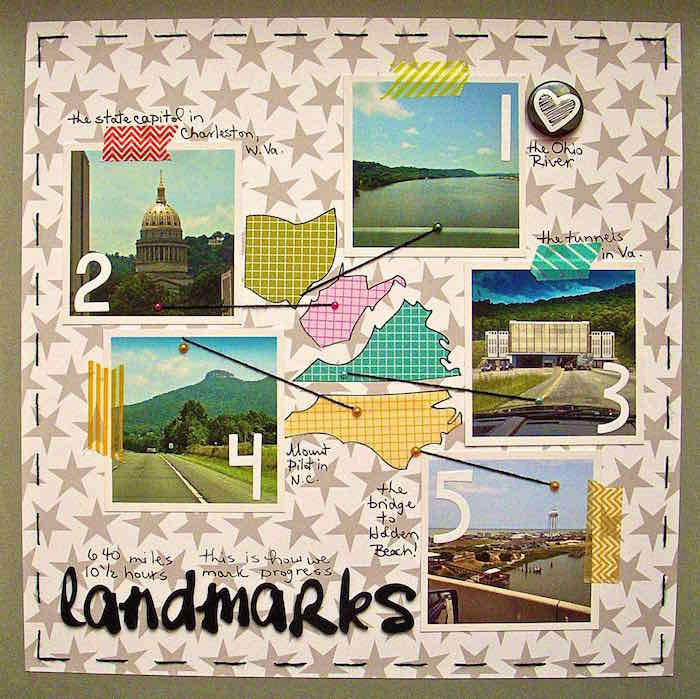
Landmarks by Sue Althouse | Supplies: Cardstock: Bazzill; Patterned Paper, Stickers: Bella Blvd.; Silhouette Die Cuts: US States; Alphabets: American Crafts; Floss: We R Memory Keepers; Flair: A Flair for Buttons; Washi Tape: My Mind’s Eye; Enamel Dots: Doodlebug
[hr]
Deborah Wagner says, “The girls here are laughing as they throw flowers in the air. I converted the photo to black and white, except for the flowers which I re-colored in a variety of pastel colors. I was inspired by the floral paper. I used it as an overlay by deleting all the grey background. My elements and design echo the fun, care-fee look of the photo by using flourishes, flowers, bright pastels, and the colorful word art which describes what the girls are feeling as they are photographed.”
[hr]
Christy Strickler says, “We studied earthquakes in our homeschool class and my son built his own model to experiment with. It’s very difficult from the photos to tell exactly what my son is doing. Creating a basic scene with house shapes and a ripped paper crevice helps to set the scene.”
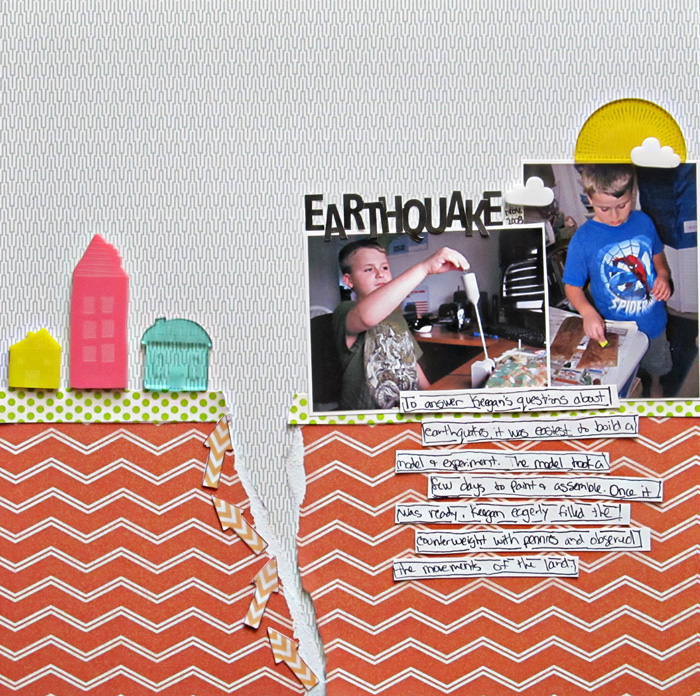
Earthquake by Christy Strickler |Supplies Patterned Paper: Studio Calico, My Mind’s Eye; Letters: Jenni Bowlin; Tape: My Mind’s Eye; Vellum: Studio Calico; Acrylic: Cocoa Daisy
[hr]
Ronnie Crowley says, “My story is a piece of family history that I’ve been wanting to record. It’s about how a special bottle of wine went missing one long ago Christmas.”
“I used a selection of digital brushes from Anna Aspnes to create a scene of a wine glass and flowing wine. This meant even with the one word title it was easy for the reader to know that this story was about missing wine. The flowing wine helps additionally to lead the reader to the actual story.”
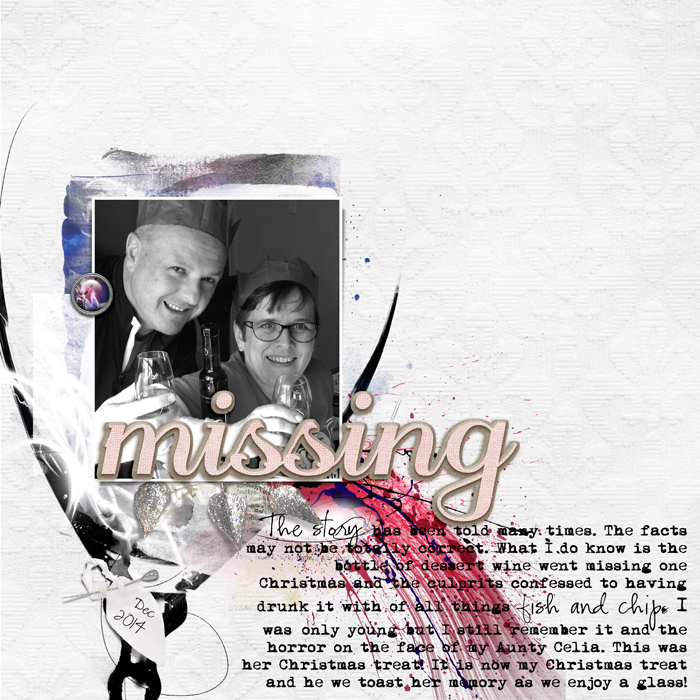
Missing by Ronnie Crowley | Supplies – Anna Aspnes – Art Play Palette Socialize; Pink Reptitle Designs – new prespective
[hr]
Doris Sander told the story of her son’s loquacious nature by extending a BIG talk bubble full of ampersands from a photo of him. The talk bubble is so big it extends off the page, and we have a feeling of how grand his conversational skills are.

He Talks by Doris Sander | Supplies: stencil – Heidi Swapp, inks – Tim Holtz, chipboard thought bubbles – Studio Calico, chipboard letters and ampersands – American Crafts, washi tape – Jillibean Soup

